Quarterly report (April-June 2019) on anonymous sources in newspapers
South Asia Check / July 8, 2019

During the three months between April 1 and June 30, 2019, among the six major national dailies that we monitor, Kantipur daily used the most number of anonymous sources in the front page reports. It used a total of 245 anonymous sources in the front page reports during the period.
South Asia Check tracks the use of anonymous sources in the news reports published on the front pages of six leading national dailies of Nepal – Kantipur, Nagarik, Annapurna Post, The Kathmandu Post, Republica and The Himalayan Times. While the first three are Nepali language newspapers, the last three publish in English.
After Kantipur, the dailies using the most number of anonymous sources included The Kathmandu Post, Annapurna Post, Nagarik and Republica respectively. The Himalayan Times used the least number of anonymous sources during the period. In the three months, it used 46 anonymous sources in its news reports.
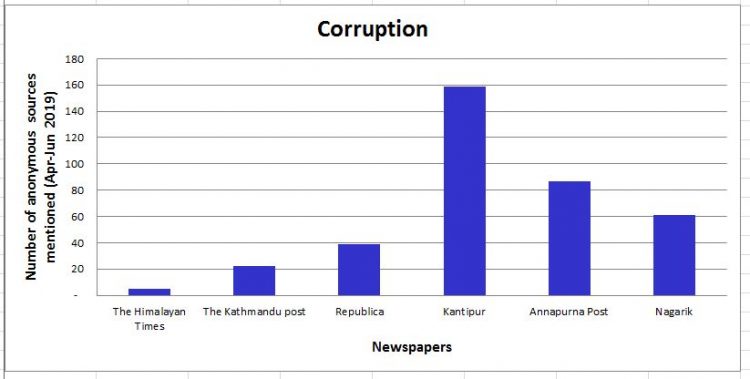
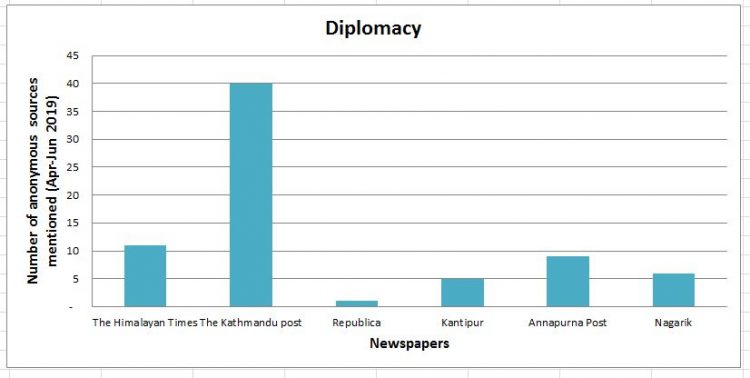
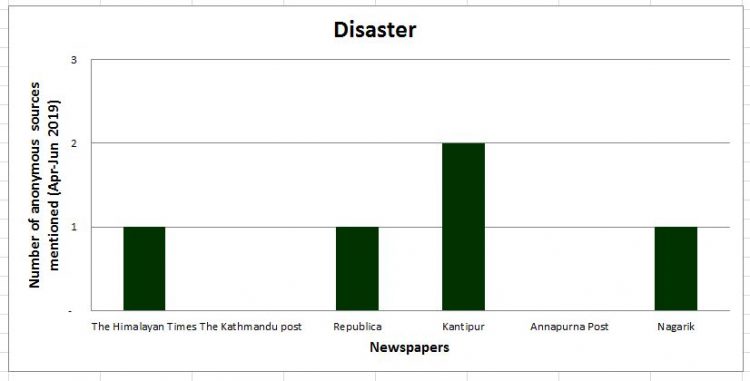
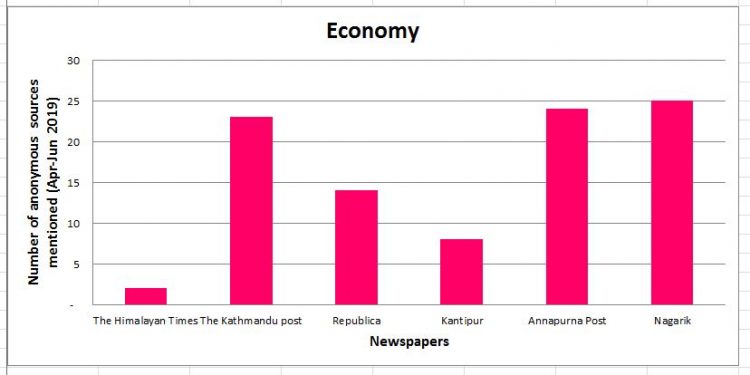
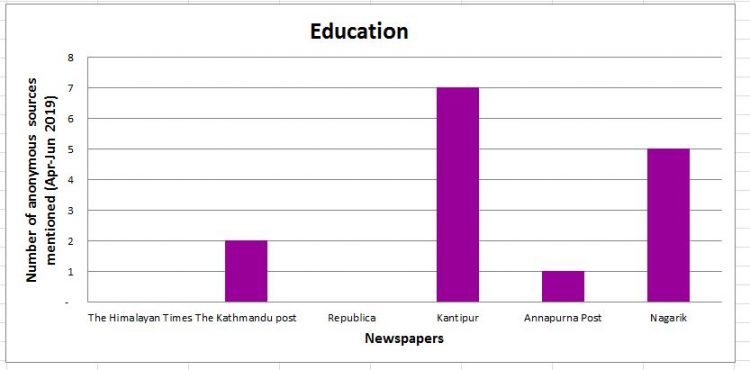
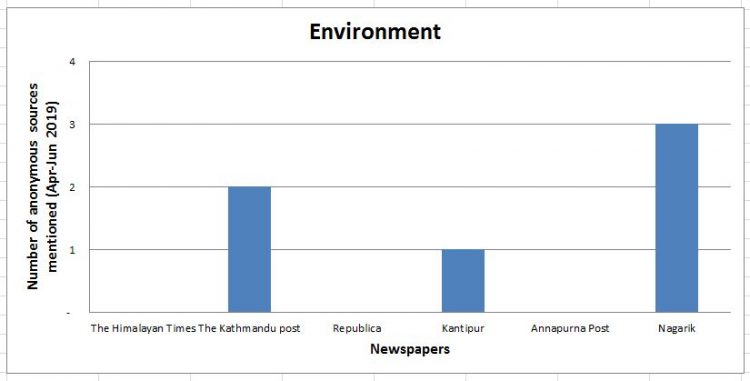
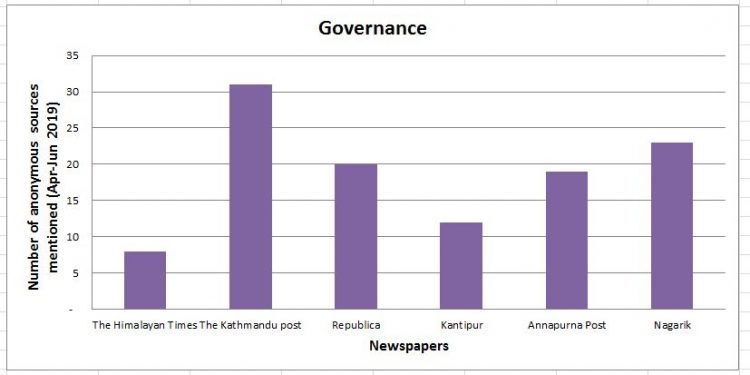
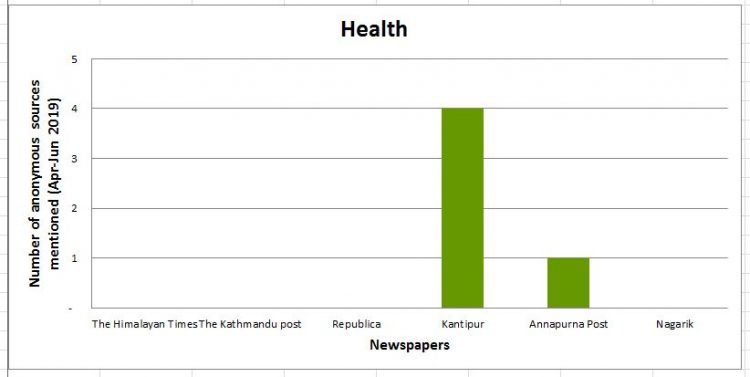
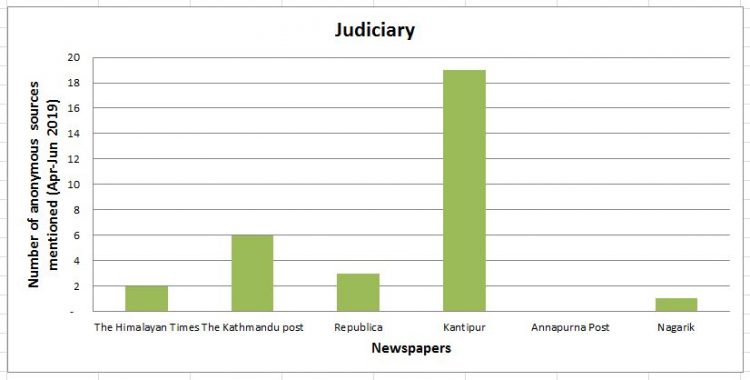
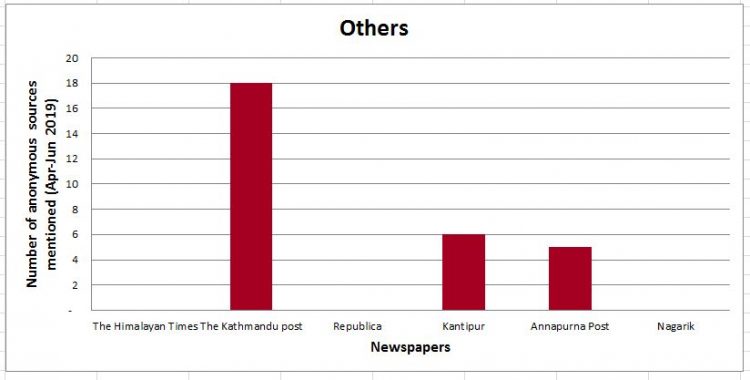
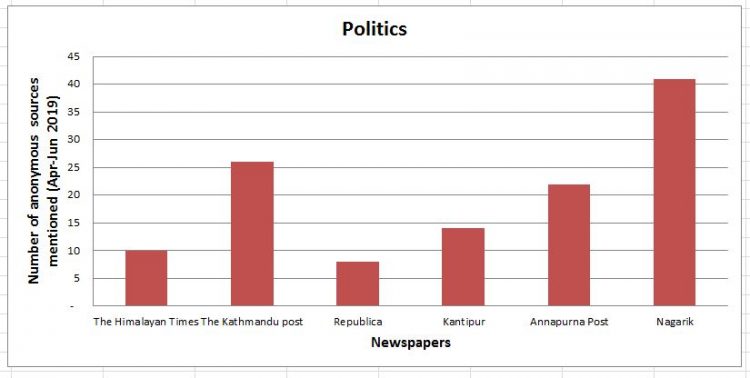
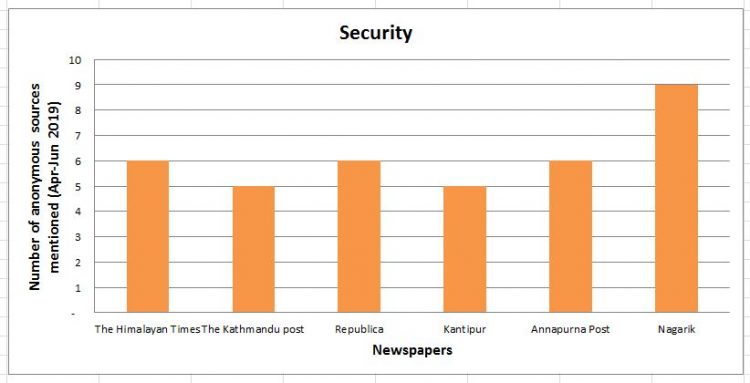
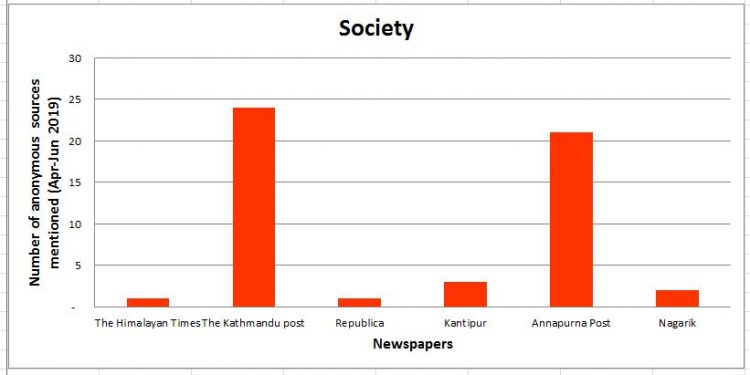
During the three months, the front page reports of the six dailies used altogether 955 anonymous sources.
Most of the news reports on the front pages of the newspapers were on politics. But anonymous sources were mostly used in corruption-related news reports (in 373 instances) during the period. Kantipur and Annapurna Post were the first and second national dailies respectively using the highest numbers of anonymous sources in their news reports related to corruption; Kantipur used anonymous sources in 159 instances and Annapurna Post in 87 instances in such reports.
Politics is the second topic in the Nepali newspapers where anonymous sources were used in highest numbers. During this period, anonymous sources were used in 121 instances in politics-related news reports in the six newspapers. Nagarik used the highest numbers of anonymous sources in politics-related news reports.
Quoting anonymous sources in news reports is normal. Regarding the use of anonymous sources in news reports, ‘Journalist’s Code of Conduct, 2016’ issued by the Nepal Press Council states the following:
“Source should be quoted for the reliability of the news. However, while quoting the source, the name and identity of such source should be kept confidential so as to avoid any serious damage to the source.”
The identity of news source should be protected only if revealing the source’s identity can cause serious harm to him/her. But some news reports published during this period have quoted anonymous sources even when there is no apparent need to do so.
For example, a report headlined “Banke, Bardiya becoming greener” published in a Nepali-language daily stated the following:
“The farmers are happy to learn that the canal construction work that started three decades ago, is finally being completed,” said one local. “The Babai irrigation project has also started land acquisition and construction works.”
In another Nepali daily a story headlined “Selfie with the statue” stated:
NCP cadres were busy talking selfies with the statue in the background on Friday. One of them said, “We couldn’t meet him when he was alive. So we are paying him homage by taking selfies with his statue.”
Another story “600 atop Everest this season” in an English-language daily states:
“There was not much human error. We tried our best to reduce accidents but in vain. It was because of mother nature,” an official said.
In these news reports, the use of anonymous sources looks unjustified because revealing the identity of news source would not cause any harm to the source.
Haphazard use of the anonymous sources diminishes the credibility of news reports and the newspapers publishing such reports.
Click here to download the statistics prepared by South Asia Check on this issue.
This material is copyrighted but may be used for any purpose by giving due credit to southasiacheck.org.
Comments
Latest Stories
- In Public Interest Covid-19 cases are low, but that’s not an excuse to avoid vaccination
- In Public Interest What is BF.7, the sub-variant that has the world by its grip?
- In Public Interest Threat of a new Covid-19 wave looms large amid vaccine shortage in Nepal
- In Public Interest As cases decline, Covid-19 test centres in Kathmandu are desolate lot
- In Public Interest Dengue test fee disparity has patients wondering if they’re being cheated
- In Public Interest As dengue rages on, confusion galore about what it is and what its symptoms are. Here’s what you need to know
In Public Interest
 Covid-19 cases are low, but that’s not an excuse to avoid vaccination
The Pfizer-BioNTech bivalent vaccines authorised by the Nepal Government provide better protection a...
Read More
Covid-19 cases are low, but that’s not an excuse to avoid vaccination
The Pfizer-BioNTech bivalent vaccines authorised by the Nepal Government provide better protection a...
Read More
- What is BF.7, the sub-variant that has the world by its grip?
- Threat of a new Covid-19 wave looms large amid vaccine shortage in Nepal
- As cases decline, Covid-19 test centres in Kathmandu are desolate lot
- Dengue test fee disparity has patients wondering if they’re being cheated
- As dengue rages on, confusion galore about what it is and what its symptoms are. Here’s what you need to know